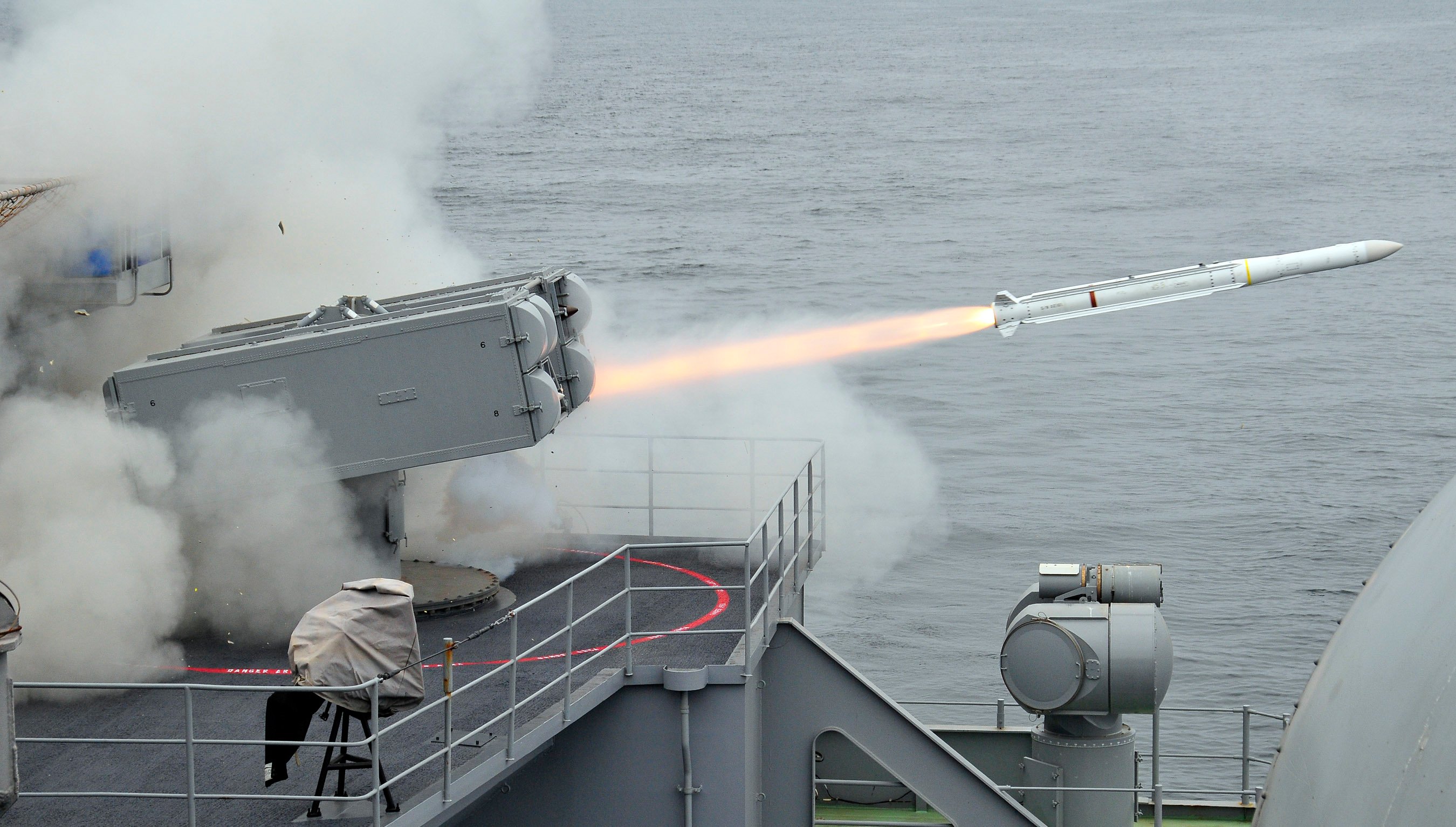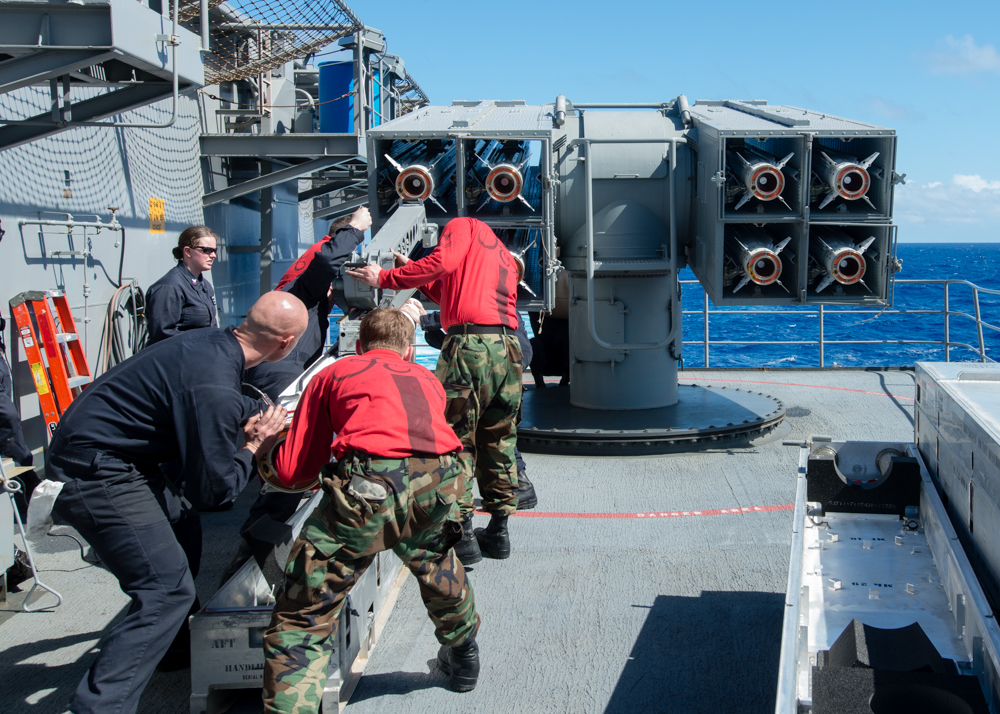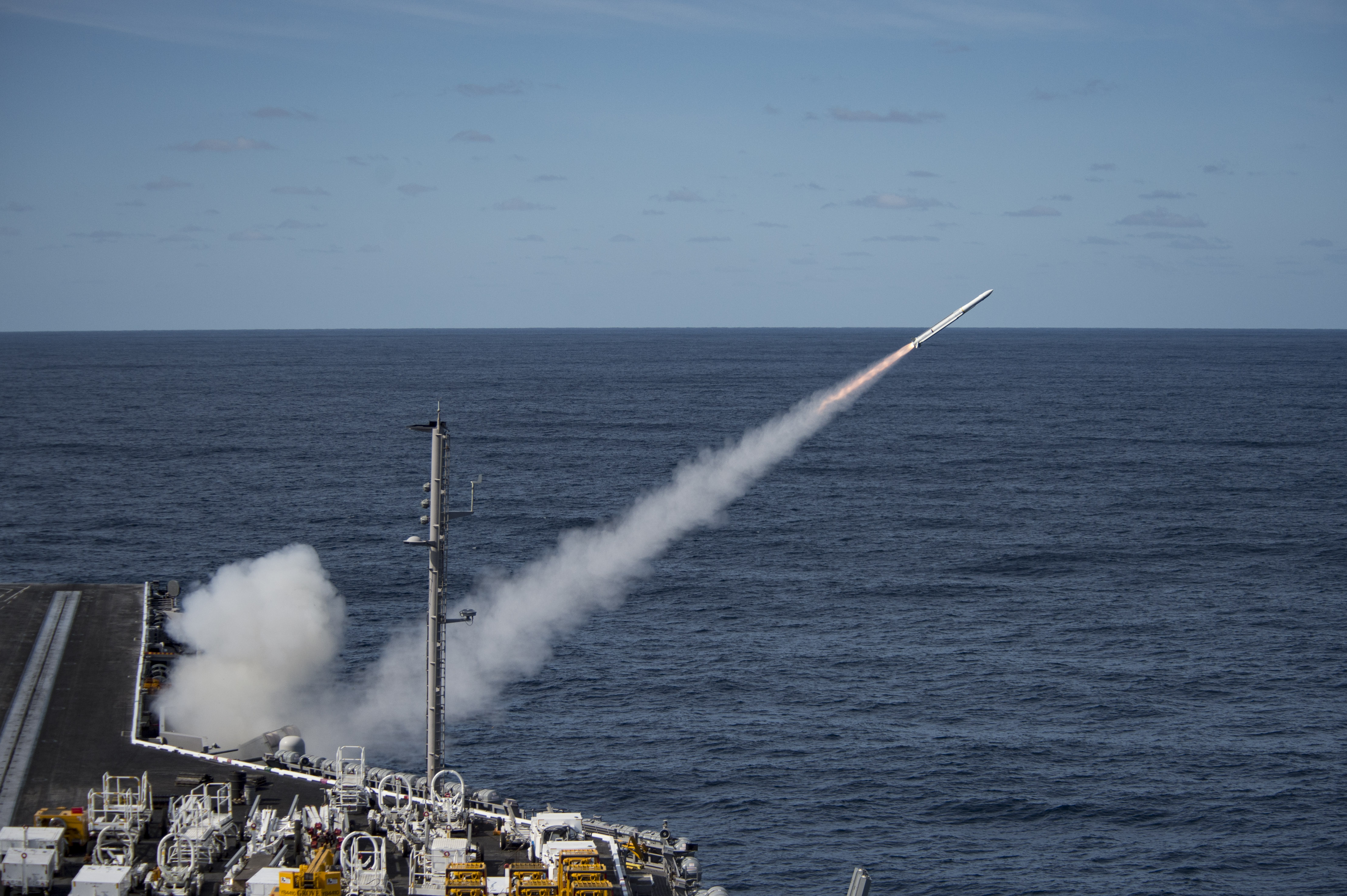
The NATO Seasparrow Project Office recently conducted the first live fire test of the Evolved Seasparrow Missile (ESSM) Block 2 anti-air missile, proving out the missile’s new seeker.
The ESSM Block 2 successfully intercepted a BQM-74E aerial target with its active guidance seeker-head, the main technology that distinguishes Block 2 from the in-service semi-active homing ESSM that finds its target via radar and midcourse data uplinks from the ship that fired the missile. Block 2 will have both active and semi-active guidance systems.
“This flight test is critical to demonstrating the technology for the ESSM Block 2,” Capt. Bruce Schuette, project manager for the NATO Seasparrow Project, said in a July 5 news release.
“I am very proud of the entire NATO Seasparrow Project Team, from our industry partners to our field activities and test facilities, for all the extensive work that went into making this event a success.”
The recent test follows two June 2017 Controlled Test Vehicle flight tests to prove the missile’s ability to launch. Four additional live fire tests will follow, ahead of starting production of the Block 2 missile.
Raytheon was awarded a $77-million contract on May 18 to begin the transition from ESSM Block 2 engineering, manufacturing and development (EMD) into low-rate manufacturing, fabricating and production.

Once in production, ESSM Block 2 would help the U.S. Navy and its 11 other NATO Seasparrow Project partners address increasingly sophisticated anti-ship cruise missile threats. According to the Navy, the current ESSM “provides reliable ship self-defense capability against agile, high-speed, low-altitude anti-ship cruise missiles (ASCMs), low velocity air threats (LVATs) such as helicopters and high-speed, maneuverable surface threats.” Adding the active seeker would help the missile better go after current and future threats, according to the news release.
The currently fielded ESSM proved itself effective in combat in October 2016, when guided-missile destroyer USS Mason (DDG-87) fired one ESSM and two Standard Missile-2s to intercept anti-ship cruise missiles fired by Iran-backed Houthi forces in Yemen. Mason is the only ship in the U.S. Navy to ever fire an ESSM in combat.

The U.S. Navy and its NATO partners also demonstrated the ESSM’s usefulness in a massive collective self-defense exercise last fall, when “the Arleigh Burke-class guided-missile destroyer USS Donald Cook (DDG-75) successfully detected, tracked and intercepted a medium-range ballistic missile target with a Standard Missile-3 Block IB guided missile. Simultaneously, the Spanish frigate SPS Alvaro de Bazan (F101) fired an Evolved SeaSparrow Missile (ESSM) against an incoming anti-ship cruise missile, while the Netherlands frigate HNLMS Tromp (F803) fired ESSMs against a pair of incoming anti-ship cruise missiles. This was the first time NATO’s smart defense concept was demonstrated with ships serving as air defense units protecting naval ballistic missile defense units.”
The ESSM Block 2 will likely be employed from the Navy’s future frigate for self-defense or to defend logistics ships the frigate may escort. The Block 2 missile could also be fielded on any ship with a Mk 41 Vertical Launching System, which can fit a quad-pack of ESSMs in one VLS cell.





